39 F. high in the Twin Cities yesterday.
28 F. average high for February 13.
31 F. high on February 13, 2012.
Sunrise: 7:15 am
Sunset: 5:40 pm. We're picking up just over 2 minutes of additional daylight every day now.
7-8 days from now: next best chance for accumulating snow. Details below.
Too Quiet
My last check from "Twister" just arrived from
Warner Brothers. There's always a little swagger walking back from the
mail box, until I open up the letter.
1 cent.
That's not a typo. I remember the filming as
hours of boredom, punctuated by a few seconds of sheer terror (when I
said my line). Kind of like our winters as of late.
When asked what she liked most about Minnesota
winters, Jen from Minneapolis' Whittier neighborhood replied: "When we
actually get the snow I remember getting growing up." Amen to that.
Jen, here's a dirty little weather-secret:
meteorologists (as a profession) over-predict snow. Why? If you forecast
6 inches & 3 falls people are fairly forgiving. But predict an inch
and wake up to "8 inches of flurries" and you'll never hear the end of
it. Not good.
Last night's clipper pulls enough mild air north
for highs near 30F early, then colder winds kick in. High hold in the
teens Saturday, and Tuesday/Wednesday of next week.
A southern storm may push a smear of accumulating snow into town late next week, possibly enough to shovel & plow.
In my weather blog (below): noted environmentalist and climate activist Bill McKibben is coming to the Twin Cities next week.
A Wardrobe Mystery. Parka or light jacket? Depends
on the day. After peaking in the low 30s today temperatures tumble
tonight, holding in the teens Friday and Saturday before blipping upward
Sunday and Monday (another thaw!) Yet another cold front surges south
Tuesday and Wednesday, not as numbing as 2-3 weeks ago, but cold enough
for most locals.
Something For The Entire Family. No significant
snows are expected until (possibly) the end of next week, when a few
inches of snow may fall from a storm tracking south/east of Minnesota.
ECMWF (European) highs above in Celsius.
Snow Potential Late Next Week. My confidence level
is still (very) low - considering any accumulating snow is still 7-8
days away. But the ECMWF model is bringing southern moisture across the
Plains into the Great Lakes, throwing a shield of snow into the Upper
Midwest. Will it stay too far south/east? Possibly. It looks cold enough
for all snow with this one, but the final track will determine whether
we pick up an inch or two, or something "plowable". Map: WSI.
On Track For A Busy Tornado Year? We've had 3 major
tornado outbreaks in each of the last 3 months. Here's a closer look at
how a fading drought over the Upper Midwest may mean a higher tornado
count.
YouTube clip courtesy of WeatherNation TV: "
WeatherNation
Chief Meteorologist Paul Douglas recaps the recent tornado outbreaks
from December, January, and February and provides insight into the
rarity of these winter-season tornadoes."
Latest Findings On Sandy - 7 Crazy Months In New York City Area. Here's today's edition of "Climate Matters" for WeatherNation TV, a
2:30 YouTube look at why New Yorkers must be shaking their fists at the sky right about now, and the latest NOAA findings on Sandy: "
New
York has seen it all in the past seven months. Tornado touchdowns,
destruction from Superstorm Sandy and a historic Nor'Easter.
Meteorologist Paul Douglas takes a look the recent extreme weather
impacting the Northeast. Plus the National Hurricane Center just
released its tropical cyclone report regarding Hurricane Sandy and we
look at the highlights."
NHC: Hurricane Sandy Caused $50 Billion In Damage, Killed 147. Here's an excerpt of good summary of a recent NOAA report on Sandy from
The Sun-Sentinel: "
Hurricane Sandy
caused almost $50 billion in damage when it struck the East Coast in
October, making it the second costliest storm behind Hurricane Katrina
to hit the United States since 1900. That’s according to the final Sandy report, released by the National Hurricane Center on Tuesday. The report also noted that Sandy killed a total of 147 people, with 72 of those in the Mid-Atlantic and Northeast U.S. Sandy was a “a classic late-season hurricane
in the southwestern Caribbean Sea,” the report said. Before striking
the U.S. coastline, it hit Jamaica as a Category 1 hurricane, Cuba as a
Category 3 and the Bahamas as a Category 1..." (Sandy photo courtesy of FEMA).
* Sandy was America's second costliest storm, second only to Katrina in 2005. Details from
Huffington Post.
Hurricane's Downgrade Undercut Warnings, Report Finds.
Sandy was a (freak) mash-up of fading hurricane and major Nor'easter.
Technically it wasn't a hurricane as it approached the New Jersey
shoreline, and not using the hurricane terminology ("Hurricane
Warnings", etc) may have given the impression that Sandy wasn't a
dangerous storms. Of course nothing could be further from the truth.
Here's an excerpt from a
New York Times story: "...
Issuing
a hurricane warning and then downgrading the storm to a post-tropical
cyclone could have devastating consequences, emergency management
officials across the region warned agency officials, with people
deciding that the storm did not pose a serious threat. “We could have
continued to call it a hurricane for one or two days,” said James
Franklin, the chief of hurricane forecasts for the center. But that
would have been a lie, he said, and “would have utterly destroyed the
credibility of the agency in the long run....”
Royal Academy Of Engineering Says UK Better Prepared For Solar Superstorm.
The solar cycle peaks in the coming months, and there's a fair amount
of angst about the risk of a "super-flare", something that could bring
down the grid. Alarmist hype? I certainly hope so. Here's a snippet of
an interesting story at
Gizmag.com: "
Britain
is better prepared for a solar superstorm than many countries,
including the United States. The Royal Academy of Engineering has
released a multi-disciplinary report on space weather’s impact on
Britain, as part of the UK National Risk Assessment. The declassified
portion of the assessment shows the level of UK preparedness in the face
of severe solar storms, and outlines the dangers Earth faces from
superstorms and how to avoid or mitigate damage..."
Image credit above: "
Artist's impression of the interaction of the Sun and the Earth's magnetosphere." (Image: NASA)
Can Emprimus Save Civilization? During every 13 year
solar cycle there is a 1 in 9 risk of a once-in-a-century solar storm,
potentially big enough to bring down portions of the electrical grid. As
if we don't all have enough to worry about. Here's an excerpt of a
fascinating story from
Twin Cities Business: "
When
George Anderson looks up, he sees national vulnerability. It isn’t
asteroids that worry Anderson, and he’s unconcerned about global
warming. Instead, he thinks a cloud of magnetically charged gas is
going to float down from the sky and scramble our electronics. Data
centers from coast to coast will be erased in a flash. Airplanes will
fall from the sky. Blackouts will plunge the country into prolonged food
and water shortages, eventually leading to lawlessness and chaos. It
sounds like the setup for a screenplay by Lost creator J. J. Abrams, but
Anderson insists it isn’t science fiction. He’s stockpiling food for
his family. He’s also been pouring his personal fortune into a new
company called Emprimus that is starting to be noticed, and that he
hopes can help save civilization. While he’s not the only one who’s
alarmed about the risk, he faces stiff headwinds from a slow-to-change
power generating industry. Can a business founded on an iffy doomsday
scenario primed to occur as early as next year gain traction in time to
make a difference?..."
Image credit above: Photography by Travis Anderson. "
Engineer and Emprimus founder George Anderson".
More Signs Point To An Apple iWatch. Dick Tracy, here we come.
Gizmag.com has the story (and speculation); here's an excerpt: "
What will Apple’s next big product be? Two months ago, if you’d polled a room full of analysts, most would have likely answered a TV set.
Recently, though, a picture has been forming of a smaller and more
portable innovation: the smartwatch. Three major media outlets have now
separately reported that Apple is indeed working on an iWatch. Following previous reports from the New York Times and Wall Street Journal, Bloomberg
now adds that Apple has a team of 100 product designers working on the
smartwatch. The group – which includes hardware, software, and
marketing specialists – has reportedly grown within the last year..."
TV Zombie Attack Warning A False Alarm. Really? And
here I've been hiding in my safe room for the last 48 hours. This is
funny, in a tragic sort of way. Here's an excerpt from
The LaCrosse Tribune: "
A
goof-up by some La Crosse disc jockeys caused WKBT-TV viewers to hear a
warning of a zombie attack. The message went out shortly after 7:30
a.m. Tuesday when the hosts of the Z-93 morning show were joking about
how hackers broke into the Emergency Alert System of a Montana TV
station Monday and sent out the bogus warning. The problem: Z-93 is the
primary station in the local emergency network, and when they played a
tape of the hoax, the alert tones triggered WKBT’s receiver, which
automatically rebroadcast the signal..."
Paul's Conservation Minnesota Outlook for the Twin Cities and all of Minnesota:
TODAY: Slushy start, then gusty winds. Gray, turning colder after lunch. Winds: NW 20-30. High: near 30, then falling.
THURSDAY NIGHT: Mostly cloudy, feels like winter again. Low: 8
FRIDAY: More clouds than sun. Semi-numb. High: 16
SATURDAY: Cold start, Clouds slowly increase. Wake-up: 3. High: 17
SUNDAY: Cue the thaw. Some sun, breezy. Wake-up: 14. High: 32
MONDAY: Turning colder with flurries. Wake-up: 20. High: 28
TUESDAY: Bright sun - fresh air! Wake-up: 4. High: 12
WEDNESDAY: Sun lingers, still chilly. Wake-up: 2. High: 16
* there's a potential for some accumulating snow next Thursday and Friday.
** photo above courtesy of MTsevereweather and WeatherNation TV.
Climate Stories...
"...
A recent review of every peer-reviewed scientific study
published on climate change science in the last two decades (13,950) by
James Powell, the former president of three prestigious American
universities, found just 24 of them questioned whether climate change
was real, and was caused by greenhouse gas emissions..." - from a U.S. News and World Report Op-Ed below.
Bill McKibben Is Coming To Minnesota. I'm looking forward to talking about Minnesota's weather and climate trends, and then introducing Bill McKibben next week at the St. Thomas (next Wednesday evening). Here's a guy that really needs no introduction: author, leader and environmentalist, founder of 350.org. From Paul Thompson, Director at
coolplanetmn.org:
"How can we connect people with their desire to take action on a
rapidly changing climate? Can people actually do something to alter the
future of history? What season to Minnesotans relate to more than any
other? At Cool Planet (
www.coolplanetmn.org)
we believe that people will take the ncessary steps to address climate
change when they make a personal connection with what is happening in
THEIR world.
Bill McKibben, arguably the global leader for
climate action, is coming to ski the American Birkebeiner Ski Marathon
in NW Wisconsin. As cross-country skiers we have noticed a distinct lack
of predictable snow over the past decade. Minnesota winters without
snow? That's just not right. Here's what some Minnesotans/Wisconsinites
are saying about "What I Love About Winter":
Grace, age 11, Edina: "I love, love, love ice skating and going sledding because I love the feeling of wind and snow in my face."
Jen, age 26, Whittier Neighborhood, Minneapolis: "When we actually get the snow I remember getting growing up."
Jonathan, age 54, Cable, WI: "The crunch of snow underfoot. Viewing the moon on a frigid evening. Watching my daughter make snow forts."
Kamin, age 54, Hayward, WI: "Finding wold tracks in the snow, snow shoeing and cross country skiing."
How do we get together to protect the things we love about this season that defines Minnesota and Wisconsin?
Obama Needs To Lay Out A Plan On Climate Crisis. Here's a video and portion of an Op-Ed from
CNN.com: "...
As if the warnings from scientists weren't enough, in 2012 -- the hottest year on record in the contiguous U.S.
-- we saw the true face of climate change: freak storms, raging
wildfires, a new Dust Bowl in the heartland and devastating damages.
Most heartbreakingly, innocent lives were lost. Here's what Obama can do
to help stop climate change -- and what he should announce in his
speech on Tuesday night.
1. Negotiate a bilateral agreement with China
New Secretary of
State John Kerry declared climate change a "life-threatening issue" at
his confirmation hearing. Obama should make his chief diplomat's top
priority the crafting of a bilateral agreement with China to reduce
carbon pollution and accelerate clean energy..."
Obama Cites Storms, Drought, To Build Case For Climate Action. Here's a snippet from a story at
The National Journal: “..
.If
Congress won’t act soon to protect future generations, I will,” he
said. That means he’s preparing to work with the heads of all his
Cabinet agencies on a suite of executive-level climate change actions
that he can enact on his own. Chief among them: Environmental
Protection Agency regulations that would force existing coal-fired
power plants to cut their carbon pollution, and a slate of actions
across agencies aimed at preparing U.S. cities and towns to adapt to
the impacts of climate change, including increased flooding, drought,
and more extreme storms. He also plans to create an Energy Security
Trust Fund, which will take revenue generated by oil and gas drilling
on public funds and channel it for clean energy research and
development (while the White House can use its authority to create the
fund, it will need Congress to act to allow it to use the fossil-fuel
revenue for clean-tech research)..."
Photo credit above: AP Photo/Charles Dharapak, Pool
On Climate Change Obama Delivered. The rhetoric was
powerful in his State of the Union address, but will the words be backed
up by deeds, by real action? With a hopelessly divided Congress will
anything (tangible) get done? Here's an excerpt of an Op Ed at
Politico: "...
We
just wrapped up the hottest year on record across the continental
United States, accompanied by the worst drought in half a century. Folks
are hurting in the heartland, where crops have withered and pastures
died. Businesses are suffering across the nation’s great middle, where
barges drag bottom in the Mississippi. And cities are reeling from
devastation and loss from hurricanes and so-called super storms. The
president has seen in this hardship the face of climate change and the
rising costs it brings. That toll, he rightly asserted in his State of
the Union address, will only continue to climb unless we decide, as a
nation, to take a stand..."
Photo credit above: "
The author says this isn't a time for hesitation and half-hearted measures". | John Shinkle at POLITICO
Why Tokyo Has More To Fear From Sea Level Rise Than Vancouver.
Not all coastal areas are (equally) threatened by rising sea levels,
the result of warming/expansion and melting of Greenland and Antarctic
ice. Here's an excerpt of a story at
The Washington Post: "...
Some
coastal areas have more to fear from climate change than others. Tokyo
and Sydney, for instance, are likely to see bigger sea-level rises
than Vancouver or London. That’s according to a new study that
attempts to model the oddities of the rising oceans. Climatologists
have known for many years that the seas are creeping up on us. As
humans warm the planet, the world’s ice caps and glaciers are melting
and the oceans are expanding. Various projections have sea levels on pace to rise
between 2 and 7 feet by 2100. What makes this so tricky to prepare for,
however, is that sea levels won’t rise evenly everywhere. There are huge variations.
In some regions, like the Mississippi Delta, the land is sinking, due
to sediment erosion or oil drilling. In other places, strong wind and
ocean currents can warp the waters and affect local sea levels.
Meanwhile, the shrinking ice sheets in Greenland and Antarctica have
their own gravitational pull, creating further imbalances...."
* graphic above courtesy of
New Scientist,
which has an interactive graphic showing how sea level rise will vary
across the globe. Coastal New England is much more vulnerable than the
Pacific Northwest.
3 Strikes And You're Out. Is the Republican party morphing into the anti-science party? Here's a snippet of an Op Ed at
U.S. News and World Report: "...
The
problem here is that the scientific community isn't split. A recent
review of every peer-reviewed scientific study published on climate
change science in the last two decades (13,950) by James Powell, the
former president of three prestigious American universities, found just
24 of them questioned whether climate change was real, and was caused
by greenhouse gas emissions. The remaining 13,926 said climate change
is happening and we're making it worse. That's a scientific consensus.
Only conspiracy nuts who think the entire scientific community is one,
big, powerful cabal don't understand a scientific consensus when they
see one..."
The New Abolitionists.
Global Warming Is The Great Moral Crisis Of Our Time. Here's an excerpt of a story at
thephoenix.com: "...
This
is not going away. At this point of unimaginable threats on the
horizon, this is what hope looks like. In these times of a morally
bankrupt government that has sold out its principles, this is what
patriotism looks like. With countless lives on the line, this is what
love looks like, and it will only grow. The choice you are making today
is what side are you on." A month after
DeChristopher speaks those words, the largest civil-disobedience action
in a generation begins in front of the White House, where 1,253
climate activists are arrested protesting the Keystone XL pipeline, the
project that would tap the second-largest carbon deposit on Earth.
(This Sunday, February 17, tens of thousands more will converge on Washington to demand that Barack Obama reject the pipeline once and for all.)..."
Obama Cries Out For Climate-Change Solutions, But What Happens Now? Here's another perspective on the President's State of the Union Address, from The Atlantic: "....
But
if Congress won't act soon to protect future generations, I will," he
said. "I will direct my Cabinet to come up with executive actions we
can take, now and in the future, to reduce pollution, prepare our
communities for the consequences of climate change, and speed the
transition to more sustainable sources of energy." The most obvious
path here is for the Environmental Protection Agency to crack down on
carbon-dioxide emissions from already-existing power plants and to
regulate carbon dioxide as a pollutant. But there are a raft of other options
Obama could undertake, too. He could use his authority to block the
Keystone XL pipeline, which would bring dirty tar sands through the U.S.
to be exported and burned abroad. He could issue new energy-efficiency
standards for appliances and building. In the State of the Union Obama
offered the goal of "cut[ting] in half the energy wasted by our homes
and businesses over the next 20 years." Much of the regulations to do
this could be executed without congressional action..." (Photo credit above: Reuters).

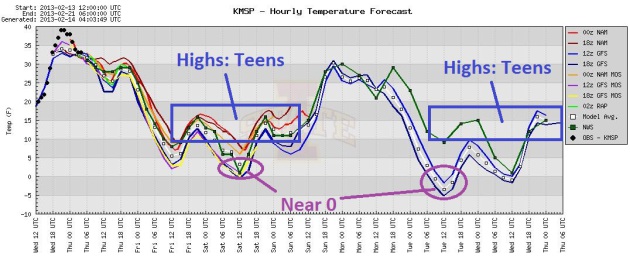

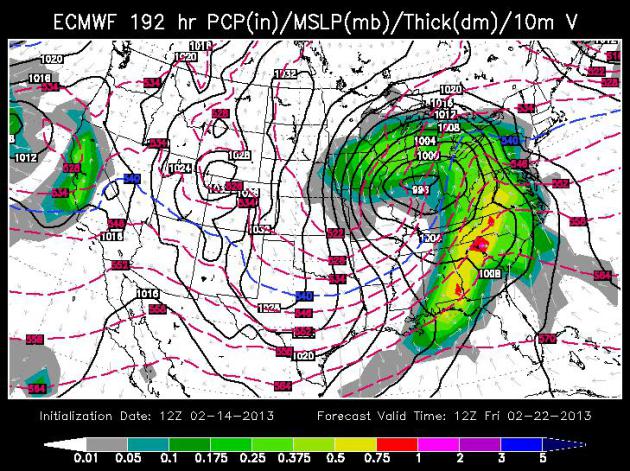
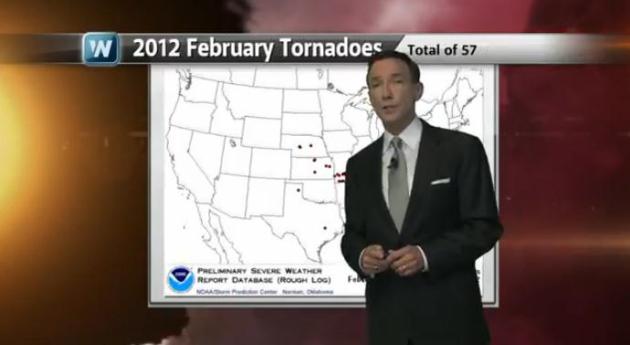
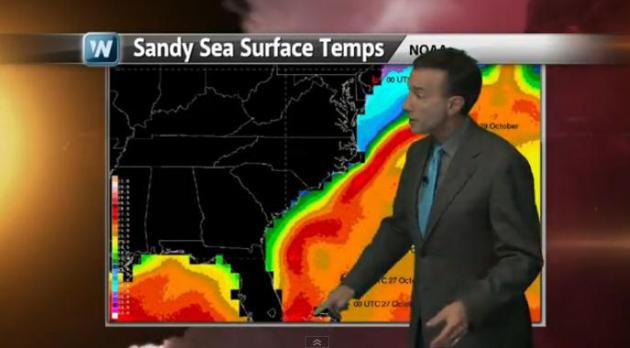
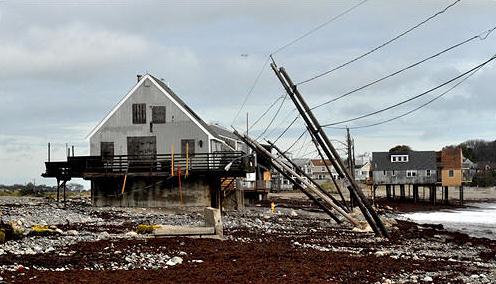

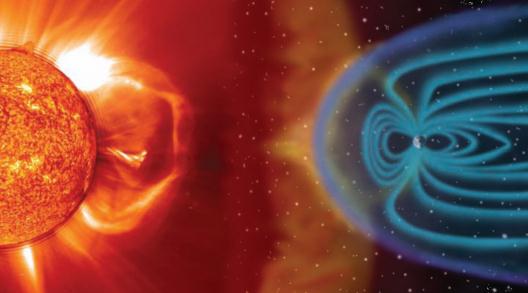

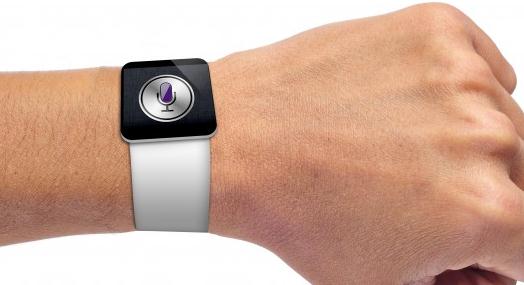
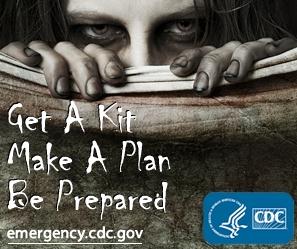

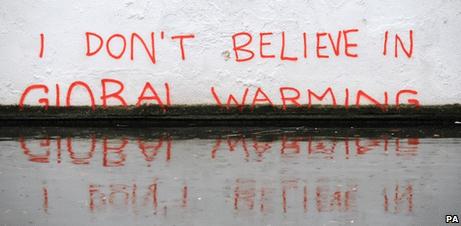

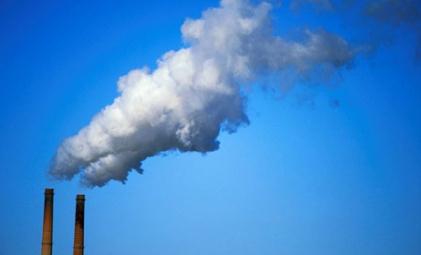


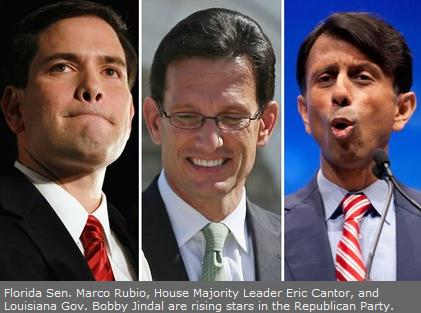

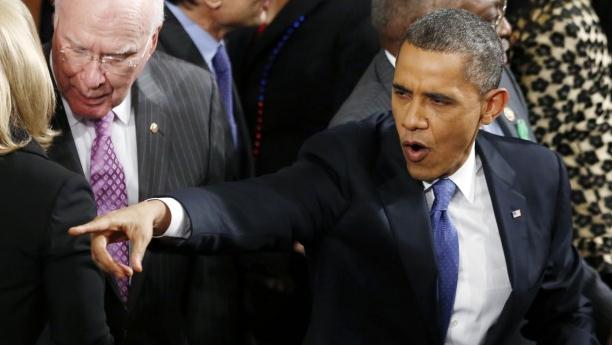
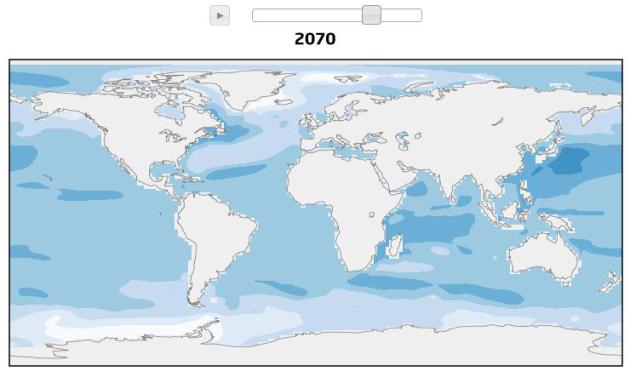
Brides usually cocktail dresses give up no efforts for creating consumers see their bests whenever they march down the church aisle.That they cheap wedding dresses continually make sure to put on some luxurious celebrity dresses sense for the marriage ceremony gowns
ReplyDeleteSuch metaphorical descriptions are based on what instruments in space have, in fact,wedding dresses 2013 observed when they see magnetic waves go by in the solar wind. But it turns out that the equations to describe this kind of movement -- equations necessary to advance scientific models of the entire system -- were not easily found.
ReplyDelete